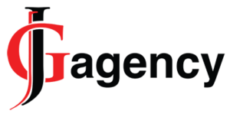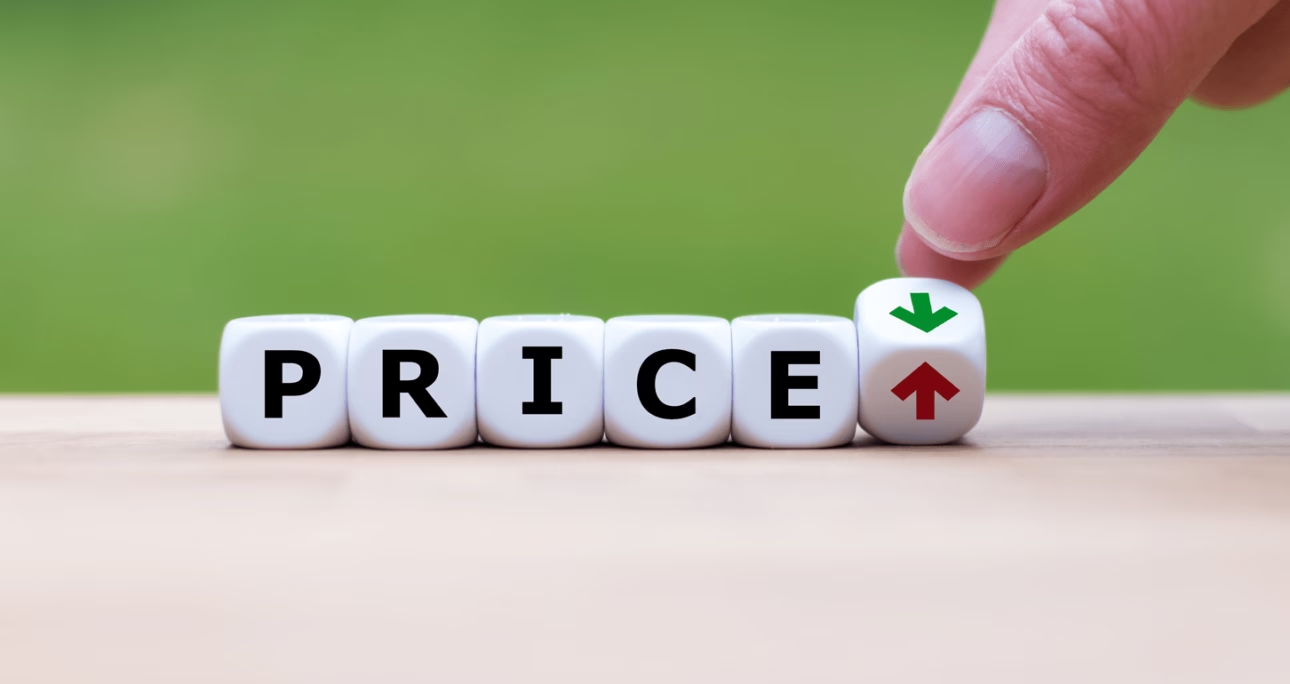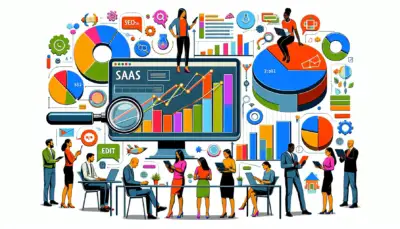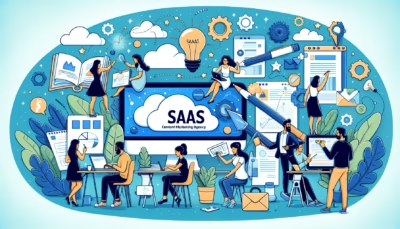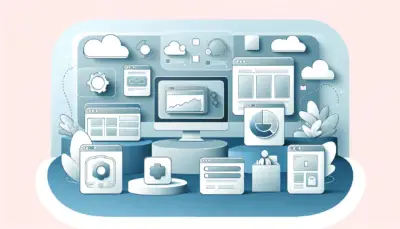Understanding SaaS Pricing Psychology
Getting a handle on what makes customers tick when it comes to SaaS pricing is like wielding a magic wand for your business. It’s all about nudging those decision switchers and boosting your bottom line. Two big ticket items to keep an eye on are how ready folks are to bust open their wallets and what your competitors are doing down the block.
Willingness to Pay Factors
Alright, let’s get into the ‘Willingness to Pay’ or WTP, as the cool kids say. This is the most a person will hand over for your software gem—like a secret peek inside their minds and wallets (Churnkey). Each person, by the way, might have a slightly different take on what makes your SaaS worth their dough.
What’s Tweaking Your Customers’ WTP?
- Perceived Value: This is like the Instagram filter of your product—it’s how customers see all those jazzy bells and whistles.
- Demographics: Yup, age is more than just a number here. Income and lifestyle throw in their two cents too.
- Brand Awareness: If your SaaS name shines like a top star in Hollywood, folks might dig deeper into their pockets (Churnkey).
| Factor | How It Messes with WTP |
|---|---|
| Perceived Value | More hot stuff = More cash |
| Customer Demographics | Young peeps = Less spend, Bosses = More dough |
| Brand Awareness | Famous brand = Fatter checks |
Get a grip on these levers, and you’re on your way to setting prices that fit your peeps like a glove. You’ll have folks smiling, and hear that cash register chime a little more often.
What’s the Competition Doing?
Now, don’t forget to peek at what the Joneses are up to. Even if your SaaS is the bee’s knees, your pricing can feel the heat from what others are asking for similar stuff (Churnkey).
How Competitors Can Play Puppet Master
- Competitor Pricing: If their prices are lower, yours might have to play copycat.
- Market Positioning: Is your product the slickest in town or just a background singer?
- Feature Comparisons: Stacking your tech tricks against theirs—it’s like comparing who brought the bigger fireworks to the party.
| Competitor Shenanigans | Pricing Tango Moves |
|---|---|
| Price Undercutting | Might have to dance down the pricing ladder |
| Premium Positioning | Keep those prices high if your offering is top dog |
| Feature Parity | Equal magic tricks can lead to equal prices |
By keeping a close eye on what everyone else is up to, you can lay down a pricing plan that brings in the crowd without shortchanging the business. Understanding your competitive scene helps to carve out a sweet spot for your product—a place where customers see the worth and aren’t shy to show you the money.
For more hot tips on SaaS pricing, catch up with our read on choosing the right SaaS pricing strategy.
Knowing how much folks wanna pay and scoping the competition are the secret sauces to cooking up a pricing plan that hits the spot. And hey, if you’re after extra ways to pull in customers, check out our guide on B2B SaaS marketing strategies and sniff around for some effective SaaS lead generation tactics.
Making Your Product Shine
Want folks to dig deep into their wallets for your SaaS? It’s all about upping the ante on how they see your product’s value. Transform your pitch and smarten up that pricing game!
Amping Up the Cool Factor
Your product’s gotta speak to folks. Here’s some ways to have them itching to buy:
- Solve the Real Problems: Hit them where it hurts (in a good way)! Show ’em how your magic fix solves their biggest headaches. Real stories, happy users—it’s show and tell but with testimonials.
- Show ‘Em What You Got: Don’t keep secrets! Get all the features out there. Whether it’s a lived-in tutorial or some fancy webinar, let folks get into every nook and cranny of what you’re offering. (Churnkey).
- Stay Fresh: Nobody wants last month’s leftovers. Keep rolling out those nifty updates and new features. It’s like a promise ring for techies—commitment and perks all in one.
And before you know it, word gets around. Stir up some buzz with smart marketing moves, like SaaS inbound marketing or SaaS email marketing, and your brand will be the talk of the town. (Churnkey).
Getting Smart with Pricing
Tiered pricing—it’s like offering small, medium, and large. It makes sure there’s a perfect fit for everyone, no matter the size of their bankroll.
| Flavor | Goodies | Price Tag (USD) | Who’s It For? |
|---|---|---|---|
| Small | Just the basics, email help | $29 | Just-right for small teams and solo adventurers. |
| Medium | Basic + fancier stuff, fast response time | $59 | For teams on the rise, hungry for more features and quick help. |
| Large | More? Yes, please! Full features, someone who actually picks up the phone | $99 | Designed for big-league players needing it all, plus backup. |
This simple breakdown helps folks see exactly what they’re getting when they toss a few more bucks your way.
When rolling out these options, keep in mind:
- Really Dig Into the Details: Make each tier feel like a different world. Like, the deluxe edition might have super genius analytics and someone to actually help you when you mess up. The basic? Simple, no frills.
- Spell It Out: Use word magic to spell out what each level brings. Use snazzy landing pages to make choosing a breeze.
- You Get What You Pay For: Tie your price tag to the big win. Each bump in cost should feel like a treasure chest of new value.
This pricing twist helps sell the bigger picture, using a bit of emotional oomph and tricks like anchoring strategies that make those higher-price options look super tempting.
By jazzing up your product and pricing savvy, you’re setting the stage for some serious customer action. For the full scoop on SaaS pricing, dive into our articles on b2b saas marketing and saas marketing strategies.
Brand Awareness and Pricing
Impact of Brand Awareness
Brand awareness is like that secret sauce in a SaaS pricing strategy. When customers spot your brand and actually know it’s there, it’s like a gold star next to your name—all of a sudden, they’re not just willing, but itching to fork out more cash. Slinging some dollars at smart marketing strategies can plump up brand awareness, helping SaaS businesses sell their goodies as fancy stuff. Even when there are cheaper alternatives, people often lean toward what they know and trust. According to Churnkey, being a household name can seriously sweeten the deal; once your brand rings a bell, your products magically seem more expensive and reliable, cutting hesitation to pay up.
Picture this: various SaaS options, boasting a similar bag of tricks. Being the brand folks recognize can make the price tag a bit less scary.
Factors Influencing WTP
| Factors | What They Do | Who Does It Best |
|---|---|---|
| Brand Recognition | Gives a Big Boost | Adobe’s Creative Cloud |
| Trust and Reliability | Skyrockets WTP | Salesforce CRM |
| Unique Features | Adds Some Spice | Slack’s Integrations |
| Customer Reviews | Builds the Buzz | Freshdesk Support Software |
Customer Perceived Value Factors
Customer perceived value (CPV) boils down to how much customers feel a product is worth. In SaaS land, this assumes a whole bunch of factors like quality, brand vibes, and those snazzy extras that make life easier. Take a leaf outta Adobe’s book, using value-based pricing to dazzle different customer crowds with a smorgasbord of options. It’s all about pumping up the perceived value (SaaS Academy).
Enhancing CPV
Spotlight the Standouts:
Shine a light on those features that set your product apart. Integrations and advanced tools can elevate your game and make you top choice.Lean into Testimonials:
Sprinkle your site with customer reviews and testimonials. They’re like the pixie dust of trust. Social proof is gold dust when buyers are weighing options.Tier it Up:
Multiple pricing levels are your best friend. They cater to different wallets and needs, making everyone feel like they’re getting the best bang for their buck. Adobe’s tiered plans for various crowds show it works.Smooth Sailing Onboarding:
Get folks comfy from the first click. A buttery onboarding experience can boost satisfaction and perceived value. Interested in acing onboarding? Check out creating a seamless SaaS onboarding experience.
CPV Enhancement Techniques
| Technique | What It Does | More Info |
|---|---|---|
| Spotlight Standouts | Shows Off the Unique Perks | highlighting the value proposition |
| Lean Into Testimonials | Builds Confidence | best practices for in-app messaging during SaaS onboarding |
| Tier it Up | Satisfies All Pockets | high converting landing page templates for SaaS marketing companies |
| Smooth Sailing Onboarding | Makes Customers Happy | saas marketing funnel |
By pumping up both brand awareness and CPV, your SaaS pricing strategy won’t just stand tall; it’ll ensure customers feel good about choosing you. Looking for extra tips on getting your SaaS pricing just right? Check out our piece on choosing the right SaaS pricing strategy.
Bringing Psychological Pricing Tactics to Life
So, you’ve got this snazzy SaaS product, but how do you make the cash register sing? Let’s chat about getting inside your buyers’ heads through psychological pricing tactics. Two of the heavy hitters here are anchoring and those urgency-inducing scarcity tactics.
Anchoring Strategies
Anchoring is like magic for pricing in SaaS land. Toss out that first price, and bam – it sticks in your customer’s brain like gum under a school desk. That number becomes the standard, and they start judging everything else off it. With anchoring, it’s all about setting the right price markers, so your customers think they’re getting a sweet deal (Fresent).
How to Roll Out Anchoring
Picture this: you set up a tiered pricing strategy with different flavors of your product. Plunk that ideal version smack dab in the middle price-wise, then subtly guide folks toward it. It’s like the pricing equivalent of a friendly nudge to try the chef’s special (SBI Growth).
| Pricing Tier | Price | Key Features |
|---|---|---|
| Basic | $19/month | Just the essentials |
| Pro | $49/month | Bells and whistles included! |
| Premium | $99/month | Everything plus a cherry on top & ghost support! |
That mid-price point is there to make the choice seem easy – “Get more for not too much more!” It’s like serving three sizes of fries and selling out the medium batch faster than you can say “supersize me” (SBI Growth).
Scarcity and Urgency
Next up, we have the old “offer’s ending soon!” vibes, where scarcity and urgency light a fire under those buyers. Fear of missing out, aka FOMO, does wonders when people think they’re about to miss a golden deal.
How to Cook Up Some Scarcity and Urgency
Wanna make folks sweat? Toss limited-time deals or exclusives into the mix. A countdown clock on a sale with a first-come, first-served flavor can get those wallets opening faster than a jack-in-the-box! Especially handy in SaaS email marketing where “act fast” messages strike gold.
| Offer Type | Duration | Discount |
|---|---|---|
| Flash Sale | 24 hours | 30% off |
| Member’s Only | 3 days | 20% off first time |
| Exclusive Webinar | Spots limited | VIP access! |
Limit those spots or run limited-time promos, and watch as urgency cranks everything up a notch. Used right, it’s a bit like musical chairs, but at the end, your customers are the ones with the prize.
Understanding and playing with these tactics turns SaaS sellers into ace strategists, pulling in and keeping customers around the block. It’s all about mixing and matching to boost those conversions and keep clients smiling. Want more to chew on? Check out our reads on saas marketing strategies and b2b saas marketing for the nitty-gritty.
Cognitive Biases in SaaS Pricing
You know what’s wild? Human psychology. Especially when it comes to deciding how much cash to fork over for software subscriptions. As a content creator or marketing manager, you can use these mental quirks to nudge folks toward a “yes” on that SaaS plan. Let’s explore two tasty tidbits: dealing with emotional versus rational decision-making and how social proof plays into this game.
Emotional vs. Rational Decision-Making
When we’re talking about SaaS pricing, people’s emotions can run the show, sometimes leaving logic standing at the door. Folks often feel swayed more by what tugs at their heartstrings than by plain ol’ facts. (Fresent) Tapping into these biases is crucial for setting price tags that’ll catch eyes and open wallets.
When considering a price, customers dance between feelings and cold hard facts. Gains, losses, fears, or good vibes can steer their choices. Toss a time-limited discount into the mix, and you might stir up a frenzy of “I gotta have it now!” emotion that accelerates decision-making.
Sway factors on the emotional side:
- Fear they’ll miss out (aka FOMO)
- Checking benefits against risks
- Desire for instant rewards
Influences taking the logical route:
- What the product does and its benefits
- Weighing costs and gains
- Looking at long-term value
A pricing plan balancing heart and head? That’s the sweet spot. Like crafting a high converting landing page that spells out product perks and tugs at emotional strings.
Influence of Social Proof
Social proof? That’s the secret sauce in any marketer’s recipe. It’s all about using current customers’ thumbs-up to build trust and add sparkle to your product’s value. (Fresent)
Flavors of social proof:
- Customer Reviews and Testimonials: Let satisfied folks sing praises.
- Case Studies and Success Stories: Share tales of users overcoming hurdles thanks to your solution.
- User Ratings: Let those shiny stars shine bright to show that folks dig your product.
- Influencer Endorsements: Get a nod from big shots in your industry who swear by what you offer.
Put social proof front and center in your marketing game, and watch how it sways potential buyers. Plastering customer love notes all over your SaaS marketing website, for example, can nudge maybe-customers into being definitely-customers.
Example Table: Emotional vs. Rational Factors
| Decision-Making Factor | Emotional | Rational |
|---|---|---|
| Immediate gratification | ✔️ | ❌ |
| Fear of missing out (FOMO) | ✔️ | ❌ |
| Cost-benefit analysis | ❌ | ✔️ |
| Product features | ❌ | ✔️ |
| Trust and credibility | ✔️ | ❌ |
By grasping these cognitive ticks and adding ’em to your SaaS pricing toolbox, you’ll create a connection with your audience. Want more juicy tidbits on pricing strategies that dig deep into customer minds? Check out our articles on saas marketing strategies and the psychology of saas pricing: how to influence customer decisions.
Effective SaaS Pricing Strategies
Figuring out how much to charge in the SaaS game is like picking the right cheeseburger toppings—gonna make or break the whole thing. So, here’s me sharing a couple of tricks: peeking at what the other guys are charging, and deciding between letting folks try your stuff for free forever just a bit.
Competitor-Based Pricing
This one’s a real classic move: size up your competition and position yourself to win over their customers. Imagine those rival products as benchmarks for your pricing strategy. You can spin it in three flavors:
- Premium Pricing
- Undercutting the Market
- Keeping Pace with Rivals
Premium Pricing
Go big or go home, right? If what you’ve got is truly the crème de la crème, don’t be shy about asking for that extra dough. After all, if your software really is worth it, show it.
| Competitor | Features | Price per User (Monthly) |
|---|---|---|
| Competitor A | Basic Features | $15 |
| Your Product | Advanced Features | $25 |
Undercutting the Market
Want to win hearts fast? Lower those prices. Ideal for newbies itching to leave a mark before dinner time.
| Competitor | Features | Price per User (Monthly) |
|---|---|---|
| Competitor B | Basic Features | $20 |
| Your Product | Basic Features | $10 |
Keeping Pace with Rivals
Wanna play it safe? Just match the other guys, but be sure to offer an extra sprinkle of awesomeness to stand out.
| Competitor | Features | Price per User (Monthly) |
|---|---|---|
| Competitor C | Standard Features | $30 |
| Your Product | Standard Features + Cool Extras | $30 |
Having your ears to the ground and knowing what makes your product stand tall is crucial. If you’re hustling for more pricing pro tips, swing by our post on b2b saas marketing strategies.
Freemium vs. Free Trial Models
They’re both fan favorites for SaaS folks, but each brings its own perks and headaches. Understanding ’em helps you pick the right one for your biz.
Freemium Model
Free stuff sells itself, right? In this plan, folks get the basic version for zip but can pony up for the VIP extras. Big names like Slack and Evernote are pros with this trick (Cobloom).
Pluses:
- Large Crowd: Attracts loads of users.
- Easy Peasy Entry: Folks can hop on without burning cash.
Minuses:
- Tricky Switch: Getting freeloaders to pay can be like pulling teeth.
- Potentially Pricey Help Desk: Loads of freebies mean more help calls.
Free Trial Model
Let users dive into the premium waters for a bit. They get a taste of the full feast for a limited time; after that, they’ve gotta pay to play.
Pluses:
- Hefty Conversion Rate: Once they try all you got, they’re hooked.
- Less Costly Support: Fewer free users to bug ya.
Minuses:
- Smaller Gang: Only the bold try out limited-time goodies.
- Rush Job: Some folks might not click all around before the clock runs out.
| Model | Conversion Rate | User Base Size | Cost to Support |
|---|---|---|---|
| Freemium | 2-5% | Large | High |
| Free Trial | 15-30% | Small to Medium | Low |
And that’s the rub; picking between these two is a head-scratcher for a lot. Understanding what makes your potential customers tick can really help. If you’re in a pickle, check our guide on crafting a high converting landing page.
With these strategies, you’re all set to nudge customers just right. Keep sharpening your edge by checking out resources like saas product marketing and b2b saas content marketing.
